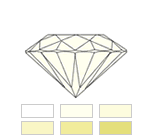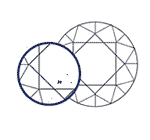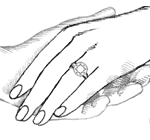Diamond Education
Worn by the wealthiest and most prominent people in the world since the ancient times, the diamond is deemed the ultimate gem of all. However, diamonds are not created equal, and neither does every piece command the same value or price. Diamonds may look simply identical to the untrained eye but every piece of stone is unique. This inevitably results to some stones being of better quality than the others. In fact, almost 80 percent of mined diamonds are said to be unfit to be made into jewelry. The topic, therefore, is the proper gauging of a diamond’s value, which can be accomplished by examining its important properties clarity, carat weight, color and cut. These are the so-called ‘four C’s’ and was first coined in 1939, just when diamonds were about to become part of the mainstream accessory fashion due to the extensive promotions of jewelry companies the likes of de Beers. These four C’s’ have become the standards in grading not only the beauty but most especially, the value of diamonds , and therefore the price.
CUT
Refers to the angles and proportions of a diamond. Often regarded the “forgotten C”, cut refers literally to the cut of the diamond and all the other workmanship that went along with it in order to bring out its facets which give it the perfect arrangement of angles best maximizing the stone’s brilliance.

COLOR
In addition to carat weight and clarity, an equally important quality that affects the value of diamonds is color. In fact, color is a very important factor in a diamond’s value. Ideal diamonds are supposed to be colorless, and those that come close to this ideal are the most expensive, not to mention beautiful and rare.

CLARITY
Clarity refers to the amount of inclusions or blemishes within the internal and surface features of a diamond that can possibly reduce its brilliance. Also called the freedom of the diamond, clarity is an important measure of value determined by the stone’s internal characteristics and surface features, depending on the quantity, types, position, size and color of the Inclusions or blemishes therein.

CARAT

What to Spend on a Diamond:
When you start to think about buying a diamond—and the love it will symbolize—you naturally want the best you can afford and a beautiful stone you will treasure forever.
Diamonds can be found in a range of prices—and you're certain to find one within the KOJ extensive inventory that suits your taste and budget. If you're about to buy a Diamond Engagement Ring, you may want to consider spending the commonly accepted guideline of two months’ salary. But it's up to you to settle on a diamond that will truly represent your deepest emotions and the promise for the future you will share.
Care, Protecting Your Diamond:
Even though diamonds are the hardest substance known to man, a diamond will scratch another diamond. So it is very important that jewelry not be stored together since it can be scratched or tangled. Also, diamond jewelry should never be worn while doing heavy work. Points are vulnerable to chipping and even everyday activity can loosen a setting. This is why it’s important to visit a professional jeweler every six months to have your diamond’s mountings and settings checked. With proper care, your diamond jewelry will last a lifetime. Here are some tips to keep your jewelry looking fabulous:
- Clean diamonds and most color gemstones in warm, soapy water with a soft toothbrush. Rinse completely and dry with a clean, soft cloth.
- Remove your jewelry before showering, swimming, cleaning, sleeping, doing rough work or handling harmful chemicals - including hair care products and perfume.
- Do not expose gemstone jewelry to sudden temperature changes, which may cause cracks.
- Store each piece of jewelry separately to prevent them from scratching each other.

